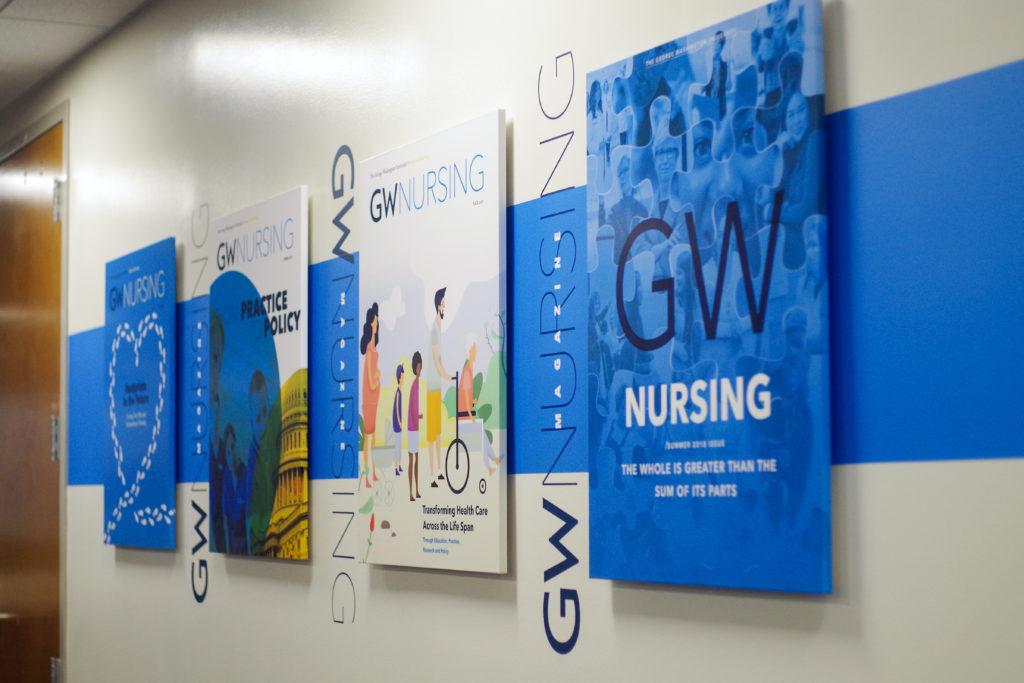Graduate School of Political Management researchers are gearing up for the upcoming 2020 presidential election with two new projects.
Ahead of the 2020 election, GSPM faculty formed a “Weekly Tweeterboard” late last month to track Twitter mentions of 2020 presidential candidates and released a second report on conversations included in the Democratic debates Monday. Officials said the projects are an effort to find new ways to collect actionable political data that could provide insight into the upcoming election.
University spokesman Jason Shevrin said the school is still “finalizing its plans” for events related to the election, but he expects the election to be a “hot topic” in political management courses that will be included in the school’s events this semester.
“GSPM students have a true passion for politics and many will be actively participating in next year’s election as campaign staffers, advocates and of course, voters,” Shevrin said in an email.
Michael Cornfield, the founder of the Public Echoes of Rhetoric in America Project and an associate professor of political management, said the school’s Tweeterboard includes the top tweet by each current major candidate and the top tweet by each candidate’s top respondent. The board shows the top 10 most mentioned candidates in descending order based on the number of Twitter mentions they received in that week.
The board also shows information about changes in the number of mentions compared to the previous week and the most retweeted and liked post about each candidate.
“As the field of candidates narrows, the Tweeterboard and our reports will feature more data and observations about specific issues,” Cornfield said in an email.
The PEORIA Project is an ongoing GSPM research project that studies how members of the public discuss political candidates and how candidates’ messages influence social media. The researchers released a series of reports in the lead-up to the 2016 presidential election on changes in candidates’ popularity on Twitter.
Cornfield said the data for the Tweeterboard is gathered through a collection of tweets from Boston-based consumer insights company Crimson Hexagon, which maintains a database of all tweets since 2008. Researchers search for the most retweeted tweet by the leading candidates and the top commenter for each candidate, focusing on “expressive attentives,” or people who pay attention to and tweet regularly about politics.
He said studying the expressive attentives can reveal more useful information compared to only studying members of the general public who typically do not initiate political involvement.
“Our data is wilder,” he said. “It’s more spontaneous, it’s more vulgar. But sometimes it’s also extremely insightful. There are a lot of smart people out there.”
Cornfield said the PEORIA Project released its second report, which detailed the issues discussed in the third Democratic presidential debate, on Monday. The project’s previous report detailed immigration’s dominance as a topic of conversation in the first debates.
He said the reports will cover ongoing conversations in the general election debates after the nominees have been selected through the primary process.
He said project researchers will also test a predictive model, which uses social media statistics to predict outcomes, after more candidates drop out. Cornfield said researchers will build the model by looking “backward” at elections from the past decade to determine whether factors like a spike in Twitter followers or mentions in the weeks before an election correlates with a victory.
He said the researchers aim to learn about how media outlets and candidates differ in the topics they want to discuss and what activists on Twitter want to talk or hear about. He added that researchers also examined which words Twitter users associate with the candidates.
“We’ll be able to say, ‘Here’s when the media talks about immigration on their Twitter feeds. Here’s what they’re emphasizing. Here’s what the Republicans are emphasizing. And here’s what the Democrats are emphasizing,’” he said. “So you’ll see a contrast in how each of these important groups treats the same subject.”
The first meeting about the model was held Wednesday with GSPM Political Management Program Director Todd Belt, GSPM Director Lara Brown – who is currently on sabbatical – and Meagan O’Neill, a recently-hired research scientist who will work full-time on the predictive model. He added that the group hopes to begin presenting results in 2020.
He said the reports will be made available on the project’s website as they are released and are intended to show GSPM alumni and political and social science scholars how social media can be mined for “usable intelligence.” He added that the project is making “every effort” to use “plain English” to explain the reports’ findings to make them accessible for nonspecialized audiences, like media outlets and students.
Katherine Brandt, a second-year graduate student pursuing a political management degree and a researcher for the PEORIA Project, said researchers began their analysis of this election cycle by analyzing the candidates’ campaign announcements to see how candidates’ speech tied into existing conversations and sparked new conversations on Twitter.
“It’s a two-way street – we’re looking at this, at how the candidates try to get their message out and get it picked up in mainstream Twitter, but also how mainstream Twitter is reverberating up back to the candidates and how that is,” she said.
She added that the research focuses on what different groups perceive as key issues, referencing how health care policy has kicked off the Democratic Party debates so far despite immigration being the “biggest issue” on Twitter. She said the differences offer insight into how people interact in our democracy.
“We’re looking at the divergences and those conversations and why we think those things are happening, but the ‘why’ is later,” Brandt said. “Right now, we’re just collecting the fact that we see this difference.”








